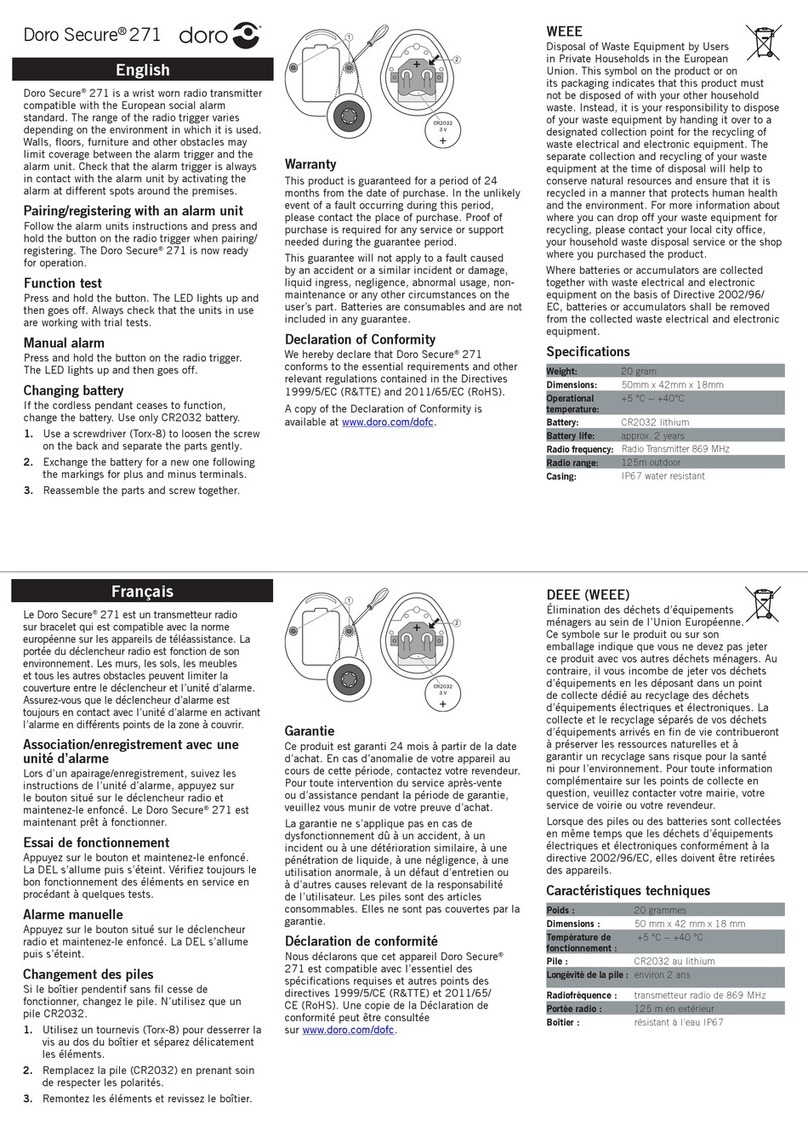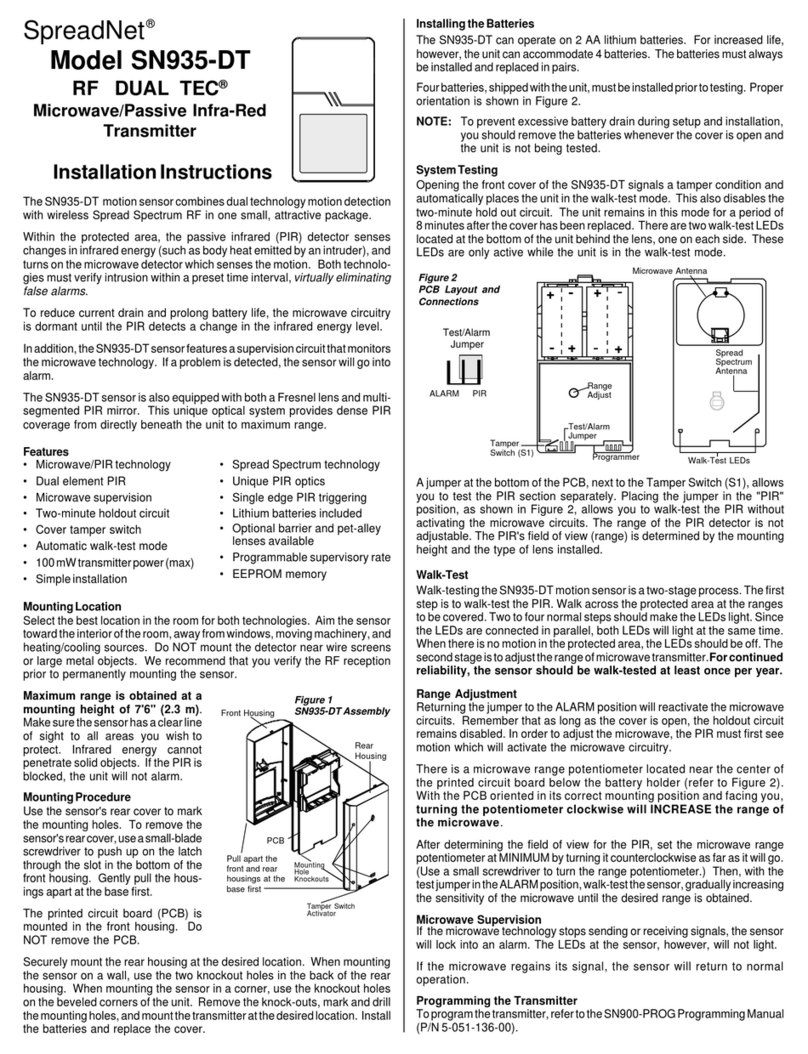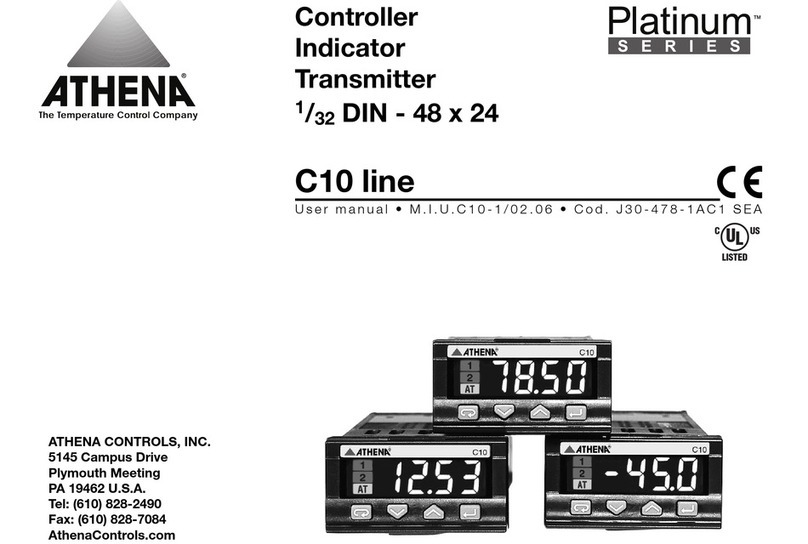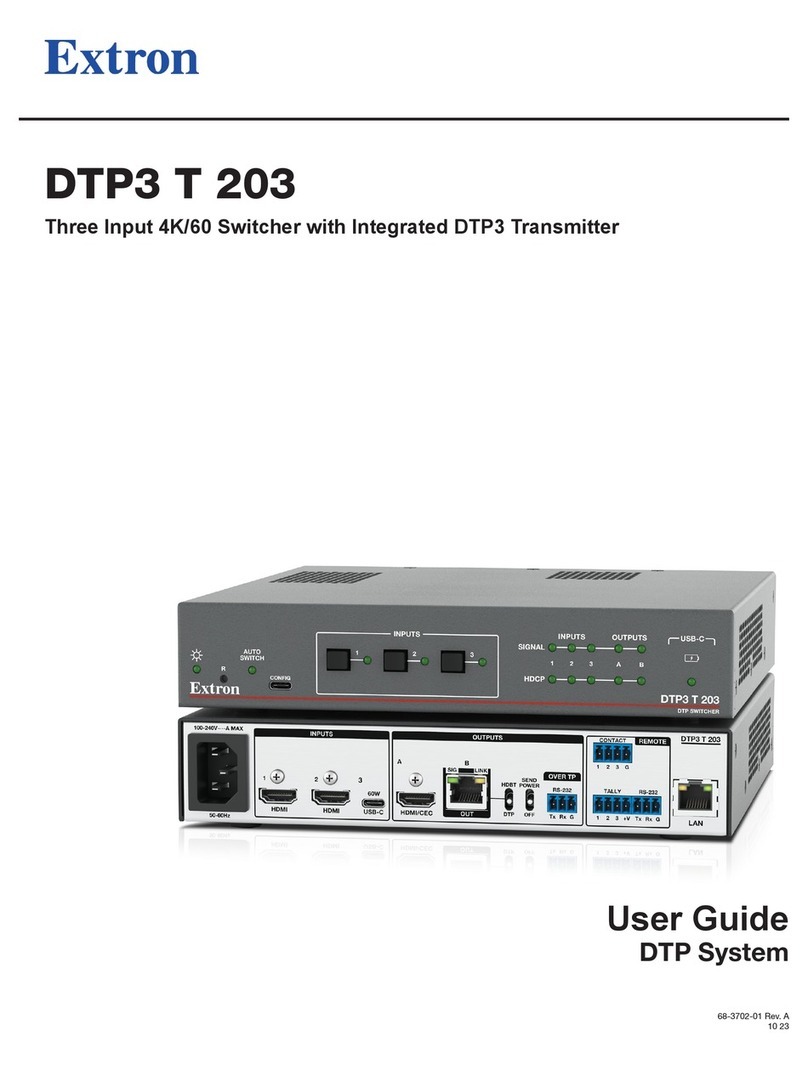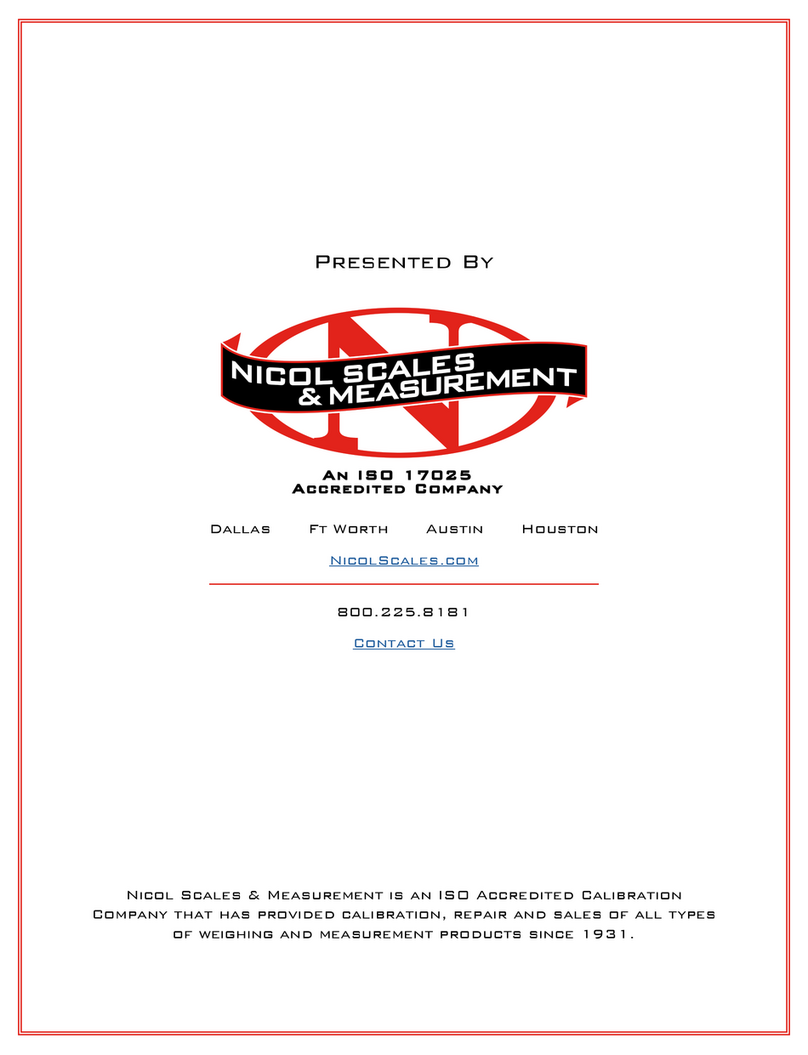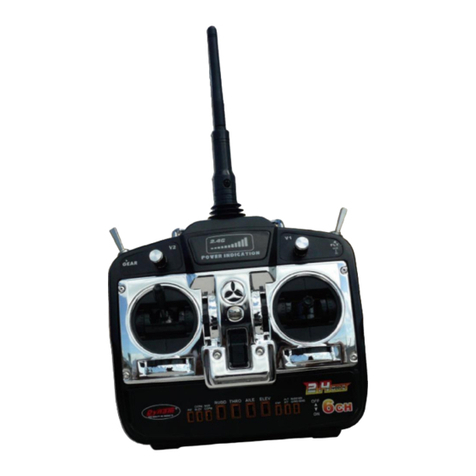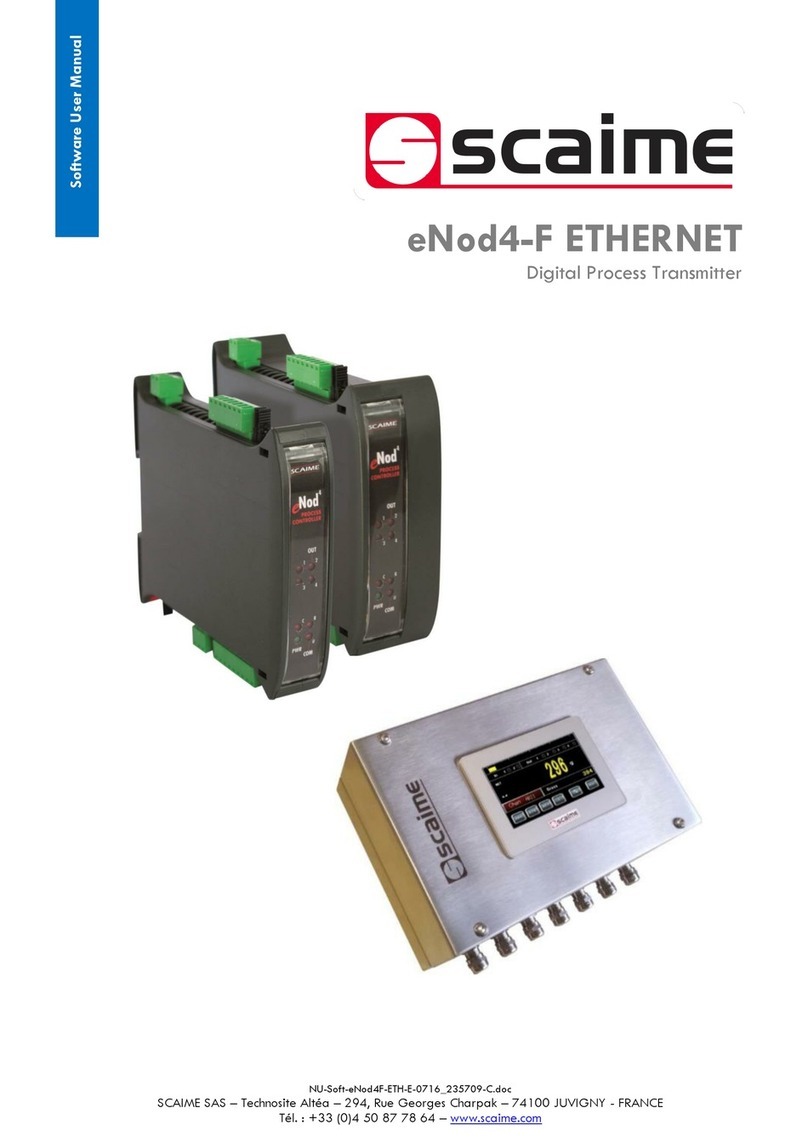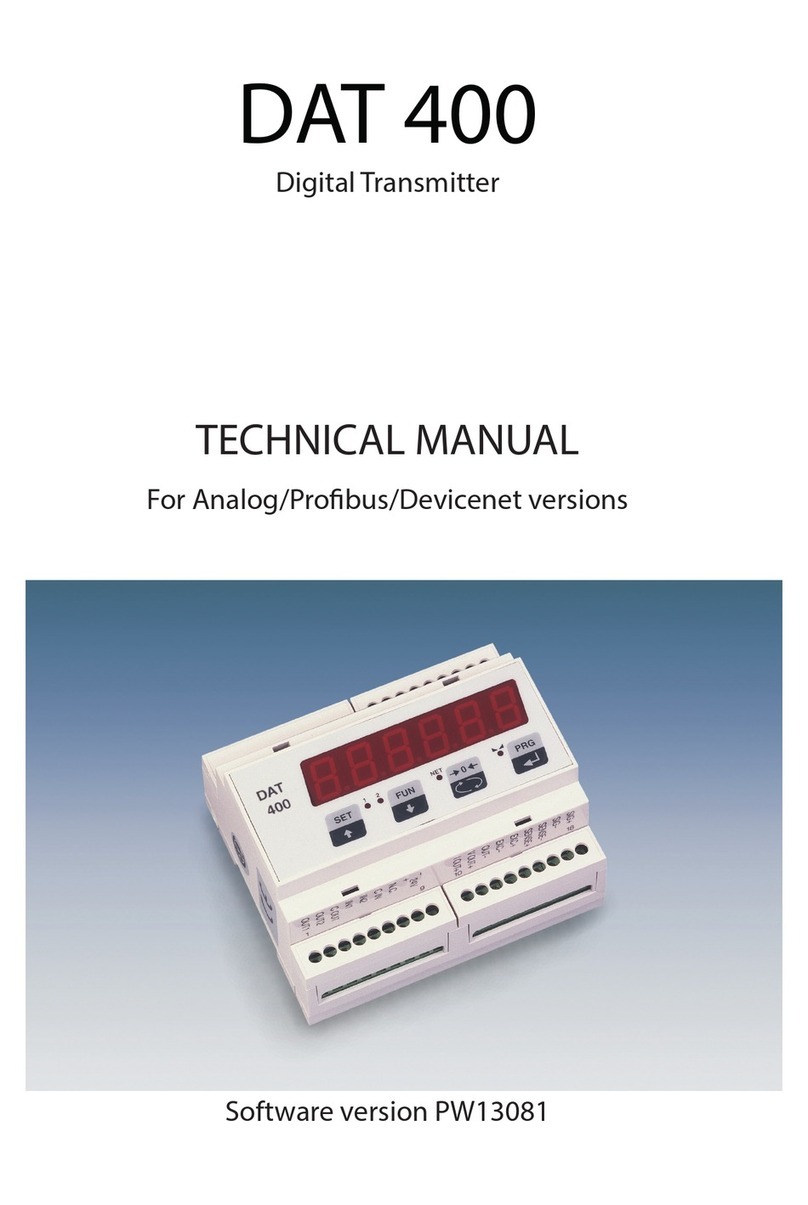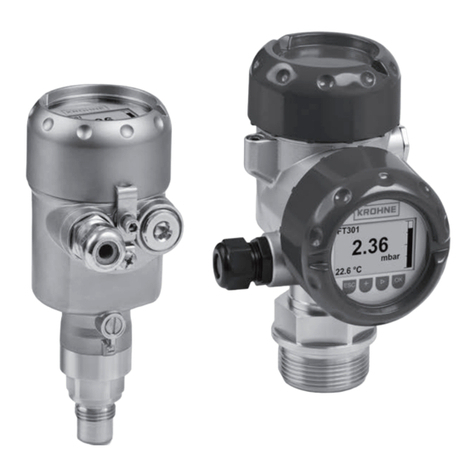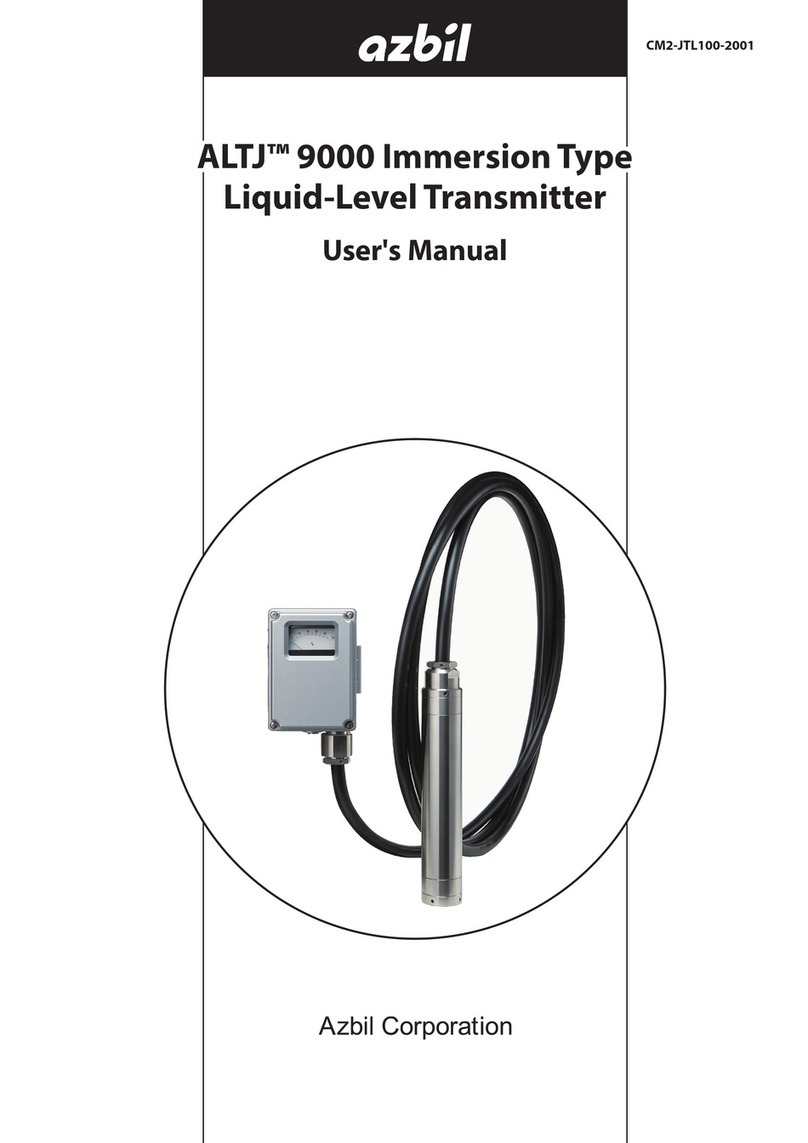Smith Meter UPT Manual

General
The Smith Meter®Model UPT (Universal Pulse) Transmit-
ter is a photo-electric, dual channel, high resolution, pulse
generator that is directly connected to the output shaft of a
positive displacement meter.
The UPT Transmitter is installed at the lowest level in the
meter accessory stack. It is designed to be mounted directly
on the meter dome adaptor and replaces the manual cali-
brator. If other mechanical stack accessories are required,
a calibrator adaptor kit is used for mounting the manual
calibrator above the UPT Transmitter.
Reference Publications
Specication Bulletin SS01105
Parts List PO01056 (P0907.05)
Receipt of Equipment
When the equipment is received, the outside packing case
should be checked immediately for any shipping damage.
If the packing case has been damaged, the local carrier
should be notied at once regarding his liability. Carefully
remove the unit from its packing case and inspect for
damaged or missing parts.
If damage has occurred during shipment or parts are
missing, a written report should be submitted to the Inside
Sales Department, Measurement Solutions, PO Box 10428,
Erie, Pennsylvania 16514.
Prior to installation, the unit should be stored in its original
packing case and protected from adverse weather condi-
tions and abuse.
Mechanical Installation
When ordered with a Smith Meter®positive displacement
(PD) meter, the Model UPT Transmitter will normally be
factory installed directly on the meter. The following steps
are required for eld mounting the UPT Transmitter to a
Smith Meter PD meter:
1. Remove all accessories (counters, mechanical temperature
compensators, transmitters, etc.) from the meter.
2. Remove the existing calibrator, located inside the meter
dome adaptor.
a. Remove the cap protecting the external calibrator
adjusting stem by removing the two mounting screws.
b. Indicate the calibrator setting with a line that intersects the
calibrator dial and its adjacent part.
c. Remove the calibrator adjusting assembly by removing
the two mounting screws and carefully withdraw the stem
assembly from the housing without changing the adjusting
screw.
d. Remove the calibrator from the meter dome adaptor by
removing the two small hold-down screws and carefully
rotating the calibrator body clockwise.
e. Attach the blind plate (provided in the adaptation
kit) over the calibrator stem assembly hole.
Universal Pulse Transmitter (UPT)
Installation/Service
Bulletin MN01045 Issue/Rev. 0.7 (11/17)
MANUAL

Issue/Rev. 0.7 (11/17)
Page 2 • MN01045
3. Mount the UPT Transmitter onto the meter dome
adaptor. A weatherproof gasket and three 3/8" - 16 x
1-1/4" mounting bolts are provided. Care must be taken
to properly engage the transmitter coupling or gear to the
meter drive coupling or gear.
For adaptation to old style (single case) PD meter (old
style PD meters include Models AB, AS, B, or S-12, 13,
24, 28, 30, 35, 42, 45, 50, 60, 65, 75, and 100), also
mount the 5/8" spacer between the UPT Transmitter and
meter dome adaptor. An additional weatherproof gasket
and longer mounting bolts are provided.
4. If a live calibrator is required to be installed below the
UPT Transmitter then a UPT calibrator adapter kit is
required P/N 529288011. If a live calibrator is required on
top of the UPT Transmitter then a remote calibrator kit is
required P/N 529288001.
5. If additional stack accessories are not required, install a
blind cover plate (10078-1) on the top of the UPT Trans-
mitter. The manual calibrator and other parts removed in
previous steps can be discarded (see note below).
6. If additional stack accessories are required, reinstall
the previously removed calibrator and stem assembly
into the new calibrator adaptor housing located on top
of the transmitter by reversing the removal procedure
described in Step 2 above (see note below).
7. Install oiler in calibrator housing (parts provided in the
adaptation kit):
a. Attach tube to oiler.
b. Insert tube through calibrator housing.
c. Drive oiler (force t) into housing.
d. Attach oiler tube to top of calibrator, just below drive
coupling.
8. Reassemble the accessories (counter, mechanical tem-
perature compensator, etc.) onto the calibrator housing.
9. Check the calibrator setting and adjust (if necessary) to
the setting recorded in Step 2b. Recalibration of the me-
ter may be required due to breaking of seals on original
calibrator adjustment and is recommended to maintain
optimum meter accuracy.
For adaptation to old style PD meters, the meter must be
recalibrated because the new factory-installed calibrator
is not adjusted.
10.If desired, a seal wire can be installed (like a belt) around
the middle of the UPT Transmitter cover and housing to
prevent unauthorized tampering with internals.
Note: With the calibrator removed from the meter, the oiler
tting on the PD meter is no longer needed and should be
sealed off.
ATEX/IECEx Installation
Standards Used:
IEC 60079-0 6th Edition, EN 60079-0: 2012 +A11:2013,
UL 60079-0 6th Edition, CAN/CSA C22.2 No. 60079-0:11
IEC 60079-1 7th Edition, EN 60079-1: 2014. UL 60079-1
7th Edition, CAN/CSA C22.2 No. 60079-1:11
Cable entries must be in accordance to EN/IEC 60079-1
section 13.
For wiring systems utilizing cable glands the gland and or
thread adaptor must be Ex certied.
The cable end must be securely installed and depending
on the cable type be properly protected from mechanical
damage.
For wiring systems utilizing conduit, an Ex certied sealing
device must be used immediately at the entrance of the
enclosure. Any unused entry must be suitably blocked
with an Ex db IIB IP65 certied plug for ATEX and IECEx
applications.
Equipment bonding shall be provided at the external
grounding facility terminal, external connection is not
required when using metallic conduit or armored cable.
External grounding facility terminal wire range:
10-12 AWG (5.26 sq mm to 3.31 sq mm) wire.
CAUTION: To prevent ignition of hazardous atmospheres,
disconnect from supply circuit before opening. Keep tightly
closed when circuits are in operation.
WARNING: To prevent ignition of hazardous atmospheres,
do not open enclosure unless area is known to be non-
hazardous. To reduce the risk of ignition of hazardous
atmospheres, conduit runs must have a sealing tting
connected within 18 inches of the enclosure.
Special Conditions For Safe Use:
- Special Fasteners: Cover Bolts - DIN 912 grade 12.9 (alloy
steel) M8 x 1.25, thread tolerance 6g, only replace with this
type.
- Select wiring and cable glands suitable for 80°C operation.
- Contact manufacturer at address listed for information on
the dimensions of the ameproof joints.
FMC Technologies Measurement Solutions Inc.
1602 Wagner Avenue
Erie, Pennsylvania 16510
USA
Marking Equipment
Covered
Certicate
Ex db IIB T6
Tamb = -40°C to 70°C IP65
Model: UPT DEMKO 03 ATEX 0308254X
IEC Ex UL 04.0009X

Issue/Rev. 0.7 (11/17) MN01045 • Page 3
Figure 1 – Terminal Block Wires
Note: Picture in color, black and white, follow wire diagram table.
Wiring Diagram
Function Color Standard Version Pin
Connections
Rotation of Transmitter Shaft Reference
Dimensions Drawing Below
Electronics Ground white [ 1 ]
Input Power (12-24 Vdc) brown [ 2 ] Counter-Clockwise Clockwise
Channel "B" Output grey [ 3 ] Leading Lagging
Channel "B" Output pink [ 4 ]
Channel "A" Output green [ 5 ] Lagging Leading
Channel "Ā" Output yellow [ 6 ]
Shield black [ 7 ]
Verication Pulse Output blue [ 8 ]
Inverted Verication Pulse red [ 9 ]
(Not used) [10]

Issue/Rev. 0.7 (11/17)
Page 4 • MN01045
Mechanical Maintenance to Transmitter
Step 1. Remove the eight cover screws and tap the
cover to break the seal.
Step 1
2
1
4
5
6
7
8
9
Step 2a
Step 2b
8
97
9
541
2
step 3
Step 4. a. Remove terminal block bracket from
enclosure.
b. Remove screws holding T-Bar in place.
1
2
3
4
5
6
7
8
9
9
8
7654321
Step 4a
Step 4b
Step 3. Remove the coupling and pull the shaft out.
Step 2. a. Remove hairspring cotter pin from the
bottom of the shaft.
b. Loosen the set screws at the top of the
encoder inside the housing.
Maintenance
The UPT Transmitter has all self-lubricating bearings and a sealed transmitter assembly so preventative
maintenance is not required.

Issue/Rev. 0.7 (11/17) MN01045 • Page 5
Step 5. a. Remove encoder from housing.
b. Remove longer inside screws followed
by shorter inside screws to expose the
o-ring. Inspect o-ring, replace if damaged
or cracked.
Step 5a
Step 5b
Step 6. Remove encoder wires from terminal block.
Step 7. Inspect terminal block and encoder for
damage, corrosion or wear and replace if
needed.
Step 6
Step 8. a. Re-insert o-ring, tighten cover over
o-ring, and then tighten aluminum piece
with the torque arm attached to the
encoder.
b. Connect wires to specied terminal
block numbers (see wiring diagram table
and Figure 1).
c. Insert T-Bar pin through the torque arm.
Note: Apply grease to all o-rings prior to re-installation.
Step 8a
Step 8b Step 8c

Issue/Rev. 0.7 (11/17)
Page 6 • MN01045
Step 9. a. Tighten T-Bar with the encoder attached
onto housing.
b. Tighten terminal block mounting bracket
screws.
Step 11. a. Insert shaft down through the top and
through the encoder.
Note: You may need to tap the shaft until it slides through completely.
b. Insert the cotter pin and tighten both set
screws.
Note: Make sure that the torque arm is approximately 1/8" above
the T-bar base.
Note: Ensure that the washer is between the cotter pin and the
housing. Apply a light coat of Loctite 222 (included) to the set screw
threads prior to tightening. Make certain to not over tighten the set
screws to avoid damage to the set screw heads, and the encoder.
Rotate the output shaft and check to ensure that the input shaft is
rotating as well.
Step 10. Add thin coat of grease to shaft prior to
re-assembly.
9 8 7 6 5 4 3 2 1
Step 10
Step 11a
9 8 7 6 5 4 3 2 1
Step 11b
9 8 7 6 5 4 3 2 1
Step 9a
Step 9b
9 8 7 6 5 4 3 2 1
1/8"

Issue/Rev. 0.7 (11/17) MN01045 • Page 7
Step 12. Attach the coupling on the end of the shaft
and insert hairspring cotter pin.
Step 12
Step 13. Inspect cover and housing at machined
surfaces (ame paths) for any signs of
damage. If surfaces are damaged the unit
must be replaced as this is part of the (ame
proof/explosion proof) protection. Apply a
light coating of multi-purpose synthetic
grease to the cover o-ring and ame path
joint before reattaching the cover to the
housing. This helps maintain a water-tight
seal and provides additional corrosion
protection to the ame path. TechnipFMC
synthetic grease P/N 644886401 is
recommended. Apply a nickel based
anti-size lubricant to all cover fasteners.
TechnipFMC P/N 646002401 is recommended.
Step 13
Step 14. Close the cover and tighten the eight cap
screws around the perimeter of the cover
using the sequence shown. The nal torque
should be 15 LB-FT / 180 LB-IN (20.3 Nm /
207.4 Kg. cm).
Step 14
Step 15. After tightening all cover bolts, check the
joint with a 0.0015" (0.038 mm) feeler
gauge all the way around the outer
perimeter of the enclosure. The feeler
gauge should not insert more than 0.125"
(3.2 mm) at any point. If it does, remove
the cover and recheck the cover joint for
any foreign objects, reassemble and check
again.
Step 15

Storage Instruction
The presence of moister / water causes excessive corrosion, damage to the electronics and eventually the units to fail.
To prevent moisture / water ingress during storage observe the following guidelines:
• Keep units in a dry, protected place
• Avoid storing units outside (if outside is only choice, protect from elements)
• Make sure the conduit port on the back side of the housing is closed with the factory provided 3/4" NPT plug
• Use the factory provided Vapor Desiccant Pack (secured with double-sided adhesive tape) inside the housing
• Keep the covers mounted to the housing to protect the electronics
Note: If units are installed and are awaiting start-up / commissioning observe the following guidelines:
• Use conduit seal-off tting as per applicable electrical code
• Do Not leave units installed with open seal-off tting and / or removed covers where moisture can enter into
the UPT housing
TechnipFMC.com
© TechnipFMC 2017 MN01045 Issue/Rev. 0.7 (11/17)
TechnipFMC
FMC Technologies
Measurement Solutions, Inc.
500 North Sam Houston Parkway West,
Suite 100
Houston, Texas 77067 USA
P:+1 281.260.2190
USA Operation
1602 Wagner Avenue
Erie, Pennsylvania 16510 USA
P:+1 814.898.5000
Germany Operation
Smith Meter GmbH
Regentstrasse 1
25474 Ellerbek, Germany
P:+49 4101 304.0
Revisions included in MN01045 Issue/Rev. 0.7 (11/17):
Step 13 revised; Step 14 revised - tightening order diagram also added.
The specications contained herein are subject to change without notice and any user of said specications should verify from the manufacturer that the specications are currently in
effect. Otherwise, the manufacturer assumes no responsibility for the use of specications which may have been changed and are no longer in effect.
Contact information is subject to change. For the most current contact information, visit our website at www.fmctechnologies.com/measurementsolutions and click on the “Contact Us” link
in the left-hand column.
Table of contents
